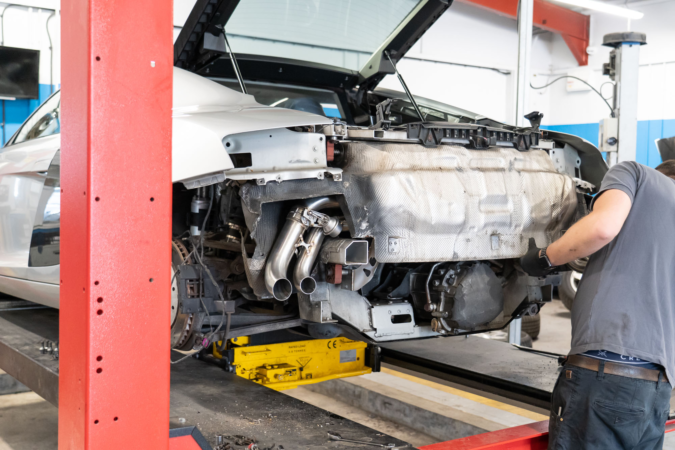If you’re facing the frustrating situation of your car refusing to go in reverse, don’t panic. This common automotive issue can stem from various causes, but with the right approach, it’s вполне возможно to get your vehicle back in motion. This comprehensive guide will provide you with a step-by-step plan to troubleshoot and fix the problem efficiently.

Image: www.motorverso.com
Understanding the Reverse Gear Mechanism
To effectively fix the issue, it’s crucial to have a basic understanding of how the reverse gear works. Located within the transmission, the reverse gear is engaged by a shift lever or electronic switch. When activated, it physically connects the engine’s power to the wheels in a way that allows the car to move backward. This mechanism plays a vital role in enabling you to maneuver in tight spaces, park conveniently, and navigate tricky driving situations.
Troubleshooting and Potential Causes
When your car won’t go in reverse, the first step is to identify the underlying cause. Several factors can lead to this issue, including:
-
Faulty Shift Linkage or Cable: A damaged or loose shift linkage can prevent the transmission from properly engaging reverse gear.
-
Transmission Fluid Problems: Lack of transmission fluid or contamination with debris can lead to inadequate lubrication and difficulty engaging gears.
-
Solenoid or Sensor Malfunction: In some vehicles, electronic solenoids or sensors control the engagement of reverse gear. A malfunction in these components can disrupt the gear selection process.
-
Electrical Issues: A faulty wiring harness, defective fuse, or corrosion in electrical connections can affect the transmission’s ability to engage reverse gear.
-
Internal Transmission Problems: In rare cases, the problem may lie within the transmission itself, such as damaged gears or worn-out clutches.
Step-by-step Repair Guide
-
Safety First: Always ensure your car is parked on a level surface with the parking brake engaged before attempting any repairs. Consult your vehicle’s owner’s manual for specific safety instructions.
-
Check Shift Linkage/Cable: Locate the shift linkage or cable under the car. Visually inspect for any visible damage, loose connections, or excessive wear. Tighten loose bolts and replace any damaged components as necessary.
-
Inspect Transmission Fluid: Use a dipstick to check the transmission fluid level. Ensure it falls within the specified range and that the fluid is clean and free of burnt smell or debris. If the fluid is low, top it up with the recommended type for your vehicle.
-
Test Solenoids and Sensors: Refer to your owner’s manual or seek professional assistance to identify and test the solenoids or sensors involved in reverse gear engagement. Replace any malfunctioning components according to the manufacturer’s instructions.
-
Check Electrical Connections: Inspect the wiring harness, fuse box, and all electrical connections related to the transmission. Look for any signs of damage, corrosion, or loose connections. Repair or replace damaged wires and secure loose connections.
-
Reset Vehicle’s Computer: In some cases, a simple reset of the vehicle’s computer can resolve electrical issues that may affect transmission function. Disconnect the negative battery terminal for at least 15 minutes, then reconnect it to reset the computer.
-
Consider Internal Transmission Problems: If all the previous steps fail to solve the issue, the problem may lie within the transmission itself. Troubleshooting internal transmission problems requires specialized knowledge and tools. It’s recommended to seek professional assistance from a qualified mechanic in such cases.
-
Professional Diagnosis: If you’re unable to diagnose or fix the problem yourself, don’t hesitate to seek professional assistance from a mechanic. They have the expertise and equipment to thoroughly diagnose the issue and perform necessary repairs.

Image: davidameek.blogspot.com
How To Fix A Car That Won’T Go In Reverse
Conclusion
With a systematic approach and careful troubleshooting, you can overcome the issue of your car not going in reverse and restore its full functionality. Remember to prioritize safety throughout the process and always refer to your vehicle’s owner’s manual for specific instructions. By addressing the potential causes outlined in this guide, you can get your car back on the road, reversing with ease, and navigating your driving ventures without hassle.